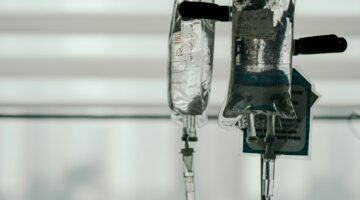A new 44-bed floor for leukemia and bone-marrow-transplant patients will open at the Cleveland Cleveland by the end of summer to accommodate an increasing number of patients and new opportunities for treatment.
The expansion is possible because of the new Miller Famliy Pavilion and Glickman Tower, which opened up hundreds of beds and other empty spaces throughout the Clinic’s main campus. Internal medicine, general surgery, and the medical and surgical intensive care units have already received additional space. Almost every department will see additional space, including pediatrics, the Clinic’s Digestive Disease Institute and its pulmonary institute, among others.
In the last several months, leukemia patients have increased by 10 percent and bone-marrow patients are up 10 to 15 percent, said Dr. Brian Bolwell, vice chief of staff and chairman of the Department of Hematologic Oncology and Blood Disorders. There are currently 16 beds for bone-marrow patients, while leukemia treatments were part a 36-bed floor that also included breast, lung and other “solid tumor” cancer patients, Bolwell said.
The Clinic often moved some solid tumor patients off the oncology floor to accommodate the leukemia patients, Bolwell said.
But capacity is only part of the reason for the change. Currently, bone-marrow patients have special air systems in their rooms because they share a floor with other patients who don’t have the same risks for infection. The new floor will have an air system for the entire floor, Bolwell said. The new floor is made up entirely of private rooms.
Because bone-marrow and leukemia patients share common characteristics, nurses can also easily be crossed trained to handle both sets of patients, Bolwell said.
The Clinic performed 165 bone-marrow transplants last year and sees about 110 to 120 new cases of acute leukemia annually, Bolwell said. He said the Clinic is in the top 10 to 15 hospitals in United States in those areas when looking at the volume of activity.
The new floor will be located on the 11th floor of the Clinic’s G Building. It should open in August.
The Clinic’s continued expansion through its freshly vacant space comes as many hospitals cut staff because they expect to have fewer patients in the midst of a rotten economy. Bolwell said that even as the Clinic has added new beds their occupancy rates have remained steady since January: between 80 percent and 90 percent.
“We’ve seen data that in a recession the impact on health care lags by several months,” Bolwell said. “We’re still very sobered by the state of the economy and are keeping a diligent eye on the main campus hospitals. That said, [occupancy is] still very brisk and doesn’t show any signs of abating.”










